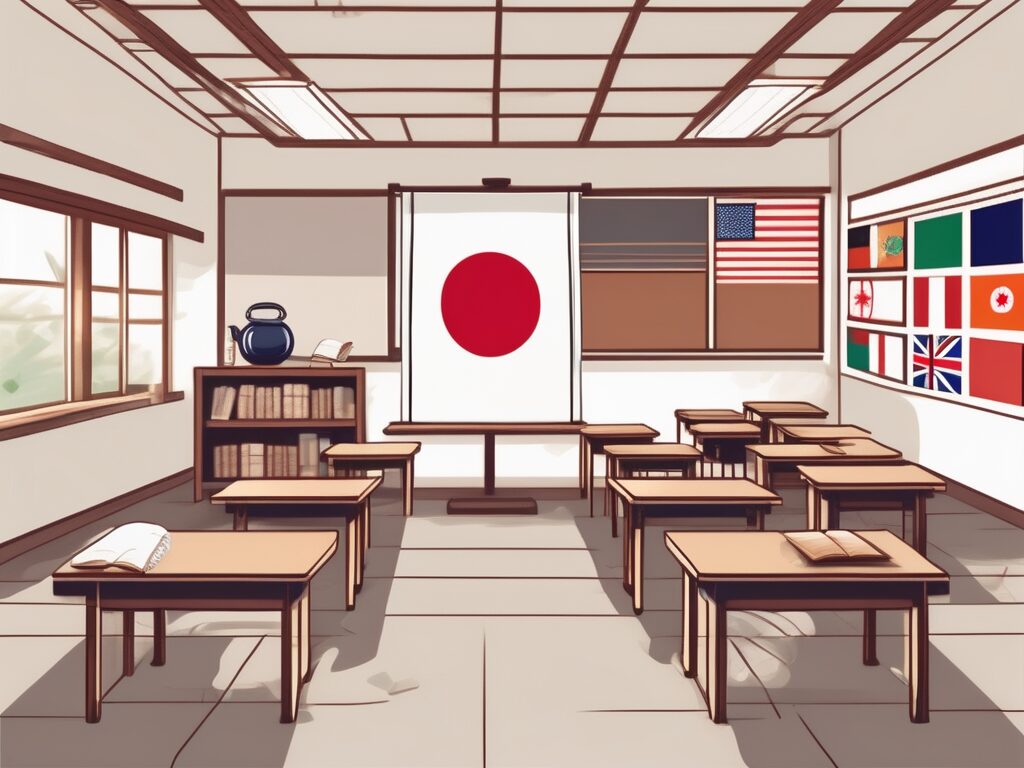Japan, a country known for its rich culture and traditions, is experiencing a shift in its educational landscape. The rise in the number of multicultural classrooms presents a new set of challenges for educators and students alike. This article delves into the complexities of these challenges and explores potential solutions.
The Emergence of Multicultural Classrooms
Over the past few decades, Japan has seen a significant increase in the number of foreign residents. This has led to a more diverse student population, resulting in the emergence of multicultural classrooms. Much like a bowl of ramen, where each ingredient contributes to the overall flavour, each student brings their unique cultural background to the classroom, enriching the learning experience.
However, this diversity also presents a set of challenges. It’s akin to blending different types of tea together; while each type has its unique taste, combining them requires skill and understanding to achieve a harmonious blend. The same applies to multicultural classrooms where educators need to balance the diverse needs of students.
Language Barriers
One of the most prominent challenges in multicultural classrooms is language barriers. Japanese is the primary language of instruction in most schools, which can be a hurdle for students who are not native speakers. Imagine trying to understand the rules of cricket when they’re explained in a language you barely understand. It’s confusing and frustrating, isn’t it?
These language barriers can hinder academic progress and lead to social isolation. It’s like being at a party where everyone else is speaking a language you don’t understand. You’d feel left out, wouldn’t you? This is the reality for many non-Japanese speaking students in multicultural classrooms.
Overcoming Language Barriers
Addressing language barriers requires a multifaceted approach. Schools can offer Japanese language support to non-native speakers, much like providing a cricket rulebook in a language they understand. This can help them grasp the language faster and integrate better into the classroom.
Moreover, promoting a bilingual or multilingual learning environment can also be beneficial. It’s like adding subtitles to a foreign film; it allows everyone to understand and enjoy the story. Similarly, using multiple languages in the classroom can foster inclusivity and mutual understanding among students.
Cultural Differences
Another challenge in multicultural classrooms is navigating cultural differences. Each student brings their unique cultural background to the classroom, much like bringing a unique dish to a potluck dinner. While this diversity enriches the learning experience, it can also lead to misunderstandings and conflicts.
For example, some cultural norms may clash with Japanese customs and traditions. It’s like trying to play football with cricket rules; it just doesn’t work. These cultural clashes can create tension in the classroom and hinder the learning process.
Respecting Cultural Differences
Creating a respectful and inclusive classroom environment is key to navigating cultural differences. This involves educating students about different cultures, much like explaining the rules of various sports to them. This can foster mutual respect and understanding among students.
Moreover, incorporating elements of different cultures into the curriculum can also be beneficial. It’s like adding different dishes to the menu at a restaurant; it caters to diverse tastes and makes everyone feel included. Similarly, a multicultural curriculum can make students feel valued and respected.
Social Integration
Social integration is another challenge in multicultural classrooms. Non-Japanese students may struggle to fit in with their peers due to language barriers and cultural differences. It’s like being the new kid in school; it’s hard to find your place and make friends.
This lack of social integration can lead to feelings of isolation and affect a student’s mental health and academic performance. It’s like trying to play a team sport alone; it’s not only challenging but also demoralising.
Promoting Social Integration
Promoting social integration involves creating opportunities for students to interact and form friendships. This can be achieved through group activities and projects, much like organising a team sport. These activities can foster teamwork and camaraderie among students.
Moreover, schools can provide counselling and support services to help students cope with the challenges of social integration. It’s like having a coach to guide you through the game; it provides support and encouragement when you need it the most.
Conclusion
While multicultural classrooms in Japan present a set of challenges, they also offer opportunities for growth and learning. By addressing language barriers, respecting cultural differences, and promoting social integration, schools can create an inclusive and enriching learning environment for all students. It’s like mastering the art of making a perfect blend of tea; it requires patience, understanding, and skill, but the result is worth the effort.
As Japan continues to embrace multiculturalism, the challenges in multicultural classrooms will undoubtedly evolve. However, with the right strategies and support, these challenges can be transformed into stepping stones towards a more inclusive and diverse educational landscape.
Empower Your Teaching Career in a Multicultural Setting with IPGCE
As Japan’s classrooms become more diverse, the demand for teachers who are adept in multicultural settings is on the rise. If you’re looking to enhance your qualifications and thrive in this evolving educational landscape, IPGCE is your gateway to success. Our International Postgraduate Certificate in Education equips you with the necessary skills to overcome barriers, advance your career, and connect with a global network of professionals. With a 50% increase in interview callbacks and a 45% boost in promotion rates for iPGCE holders, you’re not just preparing for the challenges of today—you’re shaping the future of education. Embrace the opportunity to deepen your professional development and join the UK’s #1 Teacher Training Course. Join us now and transform your teaching journey in a multicultural classroom.

